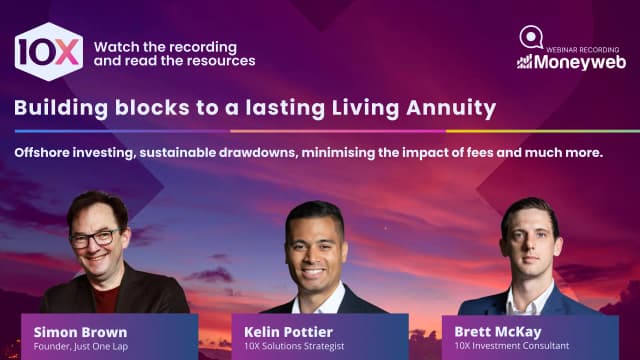Higher fees very likely means lower returns (and here's the maths to prove it)
18 March 2025

Moving jobs? How to grow your pension and protect your retirement through career change
When it comes to investing for retirement, one of the most powerful and yet overlooked factors that impacts the amount you end up with in your nest egg is the fees you pay. While seemingly small, fractions of a percentage can significantly affect your wealth over time.

At 10X Investments, we've consistently highlighted how even modest fee reductions can substantially increase your retirement savings over long investment periods. Today, we'll explore exactly how this works and why it matters for your financial future.
Important note: The calculations in this article assume 'all else being equal', with the only variable in the calculations being the fee structure. While some might argue that higher fees paid for financial advice could potentially lead to better investment decisions, research from institutions like S&P Global, Morningstar, and Vanguard consistently shows that after-fee outperformance of advice-driven actively managed funds is rare over long time periods. Finally, low fees doesn't guarantee more money in retirement - as the maths below will show, it simply gives an investor a better chance of more money in retirement.
The power of compound interest exists in small differences
Before diving into calculations, let's understand a simple concept: compound interest works both ways. Just as your investment returns compound over time, so do the fees you pay. This means that even a small fee difference becomes magnified over decades.
Think of it this way - every rand you pay in fees is:
- Money taken out of your investment
- Money that can't grow for your future
- A compounding loss that grows larger with time
The longer your investment horizon, the more dramatic this effect becomes. This is why retirement planning experts often emphasize fee awareness alongside other investment strategies.
The mathematics of fee impact
For those interested in the specifics, here's how the math works: If your investment grows at an annual rate of r%, but you pay annual fees of f%, your actual growth rate becomes (r - f)%. Over time, your initial investment P grows to:
Final Value = P × (1 + r - f)*years
Your net return is your investment returns minus fees. This equation shows that even a small reduction in the net return rate (whether from higher fees or lower performance) compounds dramatically over time.

A practical example
Let's look at an example using simplified numbers to illustrate this principle:
Assumptions:
- Initial investment: R100,000
- Investment duration: 40 years
- No additional contributions (for simplicity)
Scenario A: Lower Fee Investment
- Net annual return: 5%
- Final value after 40 years: R100,000 × (1 + 0.05)*40 = R703,999
Scenario B: Higher Fee Investment
- Net annual return: 4.5% (0.5% lower net return due to higher fees)
- Final value after 40 years: R100,000 × (1 + 0.045)*40 = R581,636
The Difference:
- Absolute difference: R122,363
- Percentage difference: 21.0%
This demonstrates that a seemingly small 0.5% difference in net returns can result in 21% more money after 40 years!
Does it still matter over shorter time horizons?
Many investors might think, "I don't have 40 years until retirement. Does this still apply to me?"
Let's look at a 20-year horizon:
20-Year Comparison: 0.5% Net Return Difference
- 5% net return final value: R100,000 × (1 + 0.05)*20 = R265,330
- 4.5% net return final value: R100,000 × (1 + 0.045)*20 = R241,171
- Percentage difference: 10.0%
Even over 20 years, a 0.5% improvement in net returns still results in 10% more retirement savings. While less dramatic than the 40-year example, it's still a significant improvement for doing nothing more than choosing a lower-cost investment.
And what happens when you include regular contributions?
Most retirement savers don't just make a single lump-sum investment—they contribute regularly to their retirement savings. Let's see how fee differences impact a more realistic scenario that includes monthly contributions:
Assumptions:
- Initial investment: R100,000
- Monthly contribution: R5,000
- Duration: 40 years
With 5% net annual return:
- Final value: R8,365,943
With 4.5% net annual return:
- Final value: R7,308,685
The Difference:
- Absolute difference: R1,057,258
- Percentage difference: 14.5%
With regular contributions, a 0.5% difference in net returns results in 14.5% more wealth, with an absolute difference of over R1 million!
Why fees are more controllable than returns
While investors often chase higher returns through active management or market timing, the evidence shows these strategies rarely succeed consistently over long periods. Research by S&P Dow Jones Indices through their SPIVA Scorecard repeatedly demonstrates that the majority of actively managed funds underperform their benchmarks over extended periods, particularly after accounting for fees.
The market delivers what it delivers, and predicting it is notoriously difficult. Fees, however, are entirely within your control. You can choose low-cost funds today and immediately secure a better expected outcome without any additional risk.
This is why we often say fees are the only "guaranteed alpha" in investing - one of the few certainties that can improve your outcome.
The 10X approach: Low fees by design
At 10X Investments, our investment philosophy is built on three pillars:
- Strategic asset allocation
- Index-tracking investments
- Low fees
By focusing on these evidence-based principles rather than more expensive active management, we've been able to deliver better outcomes for our clients. Our approach acknowledges that fees are one of the few certainties in investing—and minimizing them is one of the most reliable ways to improve your retirement outcome.
A note on advisory services and fees
Again, it's important to clarify that our calculations assume "all else being equal." Some investors pay higher fees for financial advisory services, with the expectation that advisors will make better investment decisions that outperform the market by enough to justify these fees.
While research from S&P Global, Morningstar, and Vanguard consistently shows that after-fee outperformance of advice-driven actively managed funds is rare over long time periods, good financial advice can potentially add value in areas such as:
- Behavioural coaching (preventing emotional decisions)
- Tax planning
- Estate planning
- Personalised financial planning
When evaluating advisory services, consider carefully whether the value received justifies the additional fees charged, as these fees will compound over time (as demonstrated in our examples).
Lastly, it's worth mentioning that the other great destroyer of purchasing power (and therefore the value of your money) is inflation. Our examples don't explicitly mention inflation, but by using a return number that is below what one might usually expect from a retirement fund, we have tried to give an indication of the value of these investments after inflation is taken into account.
Related articles
How can we 10X Your Future?
Begin your journey to a secure future with 10X Investments. Explore our range of retirement products designed to help you grow your wealth and achieve financial success.


